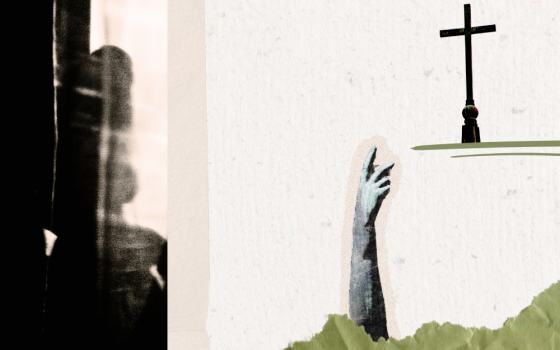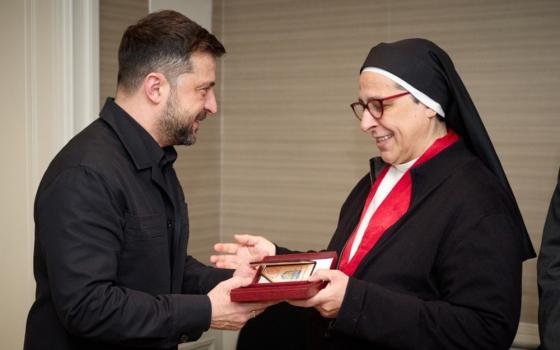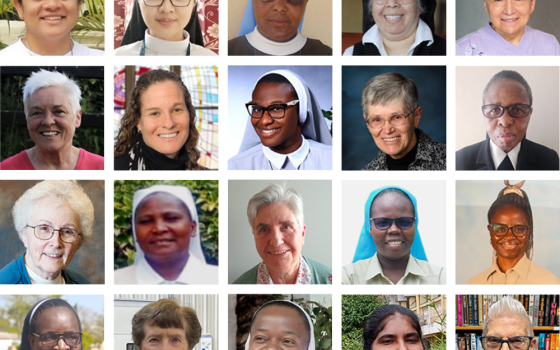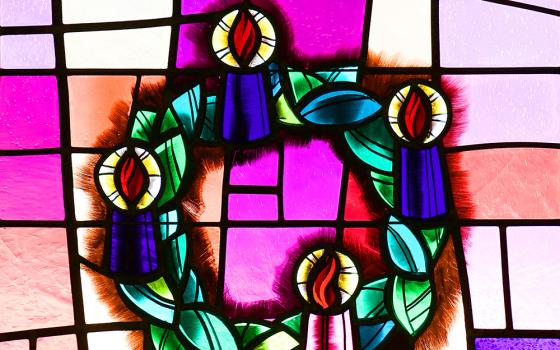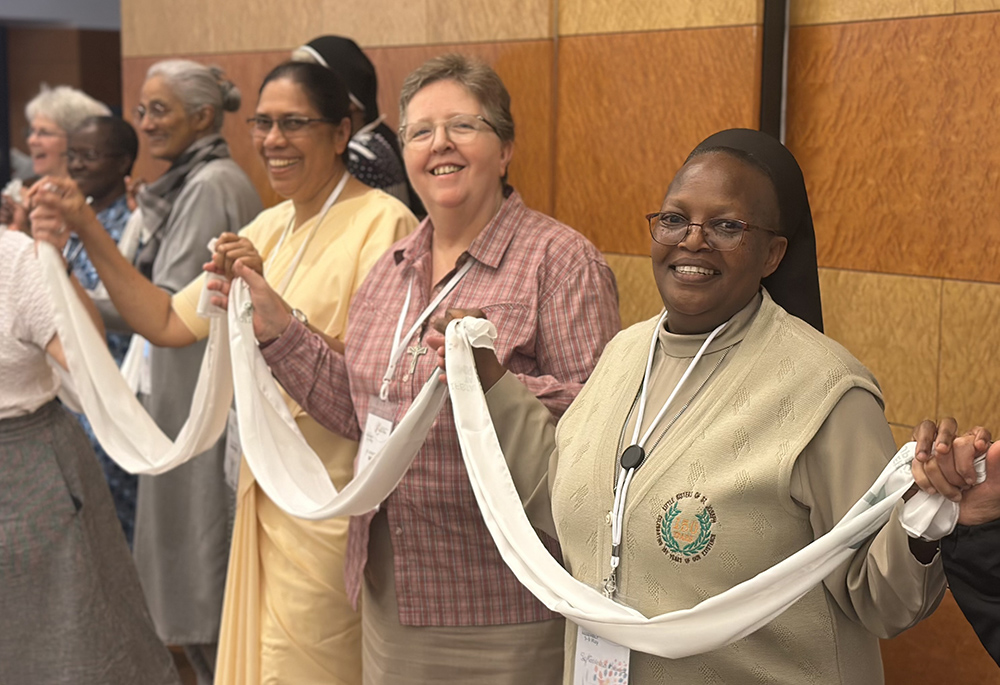
Representing about 590,000 sisters from around the world, the International Union of Superiors General was born in the spirit of the 1962-65 Second Vatican Council. At UISG's 2025 plenary, sisters engaged in synodal conversations as an homage and continuation of both Vatican II and Francis' papacy. (GSR photo/Soli Salgado)
As fragmentation and change increasingly define the modern world, the International Union of Superiors General (UISG) is betting on global sisterhood as a prophetic response. Its newly released six-year plan invites women religious to lean into their collective strength — and to reimagine religious life in the face of shifting demographics and a renewed call to synodality.
Conducted in preparation of UISG's 60th anniversary this December, the report (shared at the May 5-9 general assembly in Rome) is grounded in spiritual discernment and the evolving needs of more than 1,900 congregational leaders worldwide.
Titled "Moving into the Future 2025-2031," the document is the fruit of more than a year of consultations involving hundreds of superiors general, theologians, Vatican representatives, partners from nongovernmental organizations, and regional conference leaders, and offers both a look inward and a vision for the road ahead.
As the organization seeks to adjust to a changing world, at the heart of these consultations was a central question: What is the emerging call for UISG today?
For many superiors general, the answer was clear: to foster a global sisterhood rooted in spirituality, solidarity and prophetic action.
Founded in 1965 on the final day of the Second Vatican Council, UISG was born in a moment of ecclesial renewal. Since then, UISG has functioned as a global forum for superiors general of women's apostolic religious congregations. While its structure has remained relatively stable — based on regional constellations, an elected board and a central secretariat in Rome — its mission has undergone a quiet revolution over the last decade.
Much of that change began in 2013, when a newly energized board pushed for a broader vision. Gone was the image of a Rome-centric bureaucracy: In its place emerged a dynamic global network, embracing smaller congregations, investing in professional staff and systems and launching major initiatives.
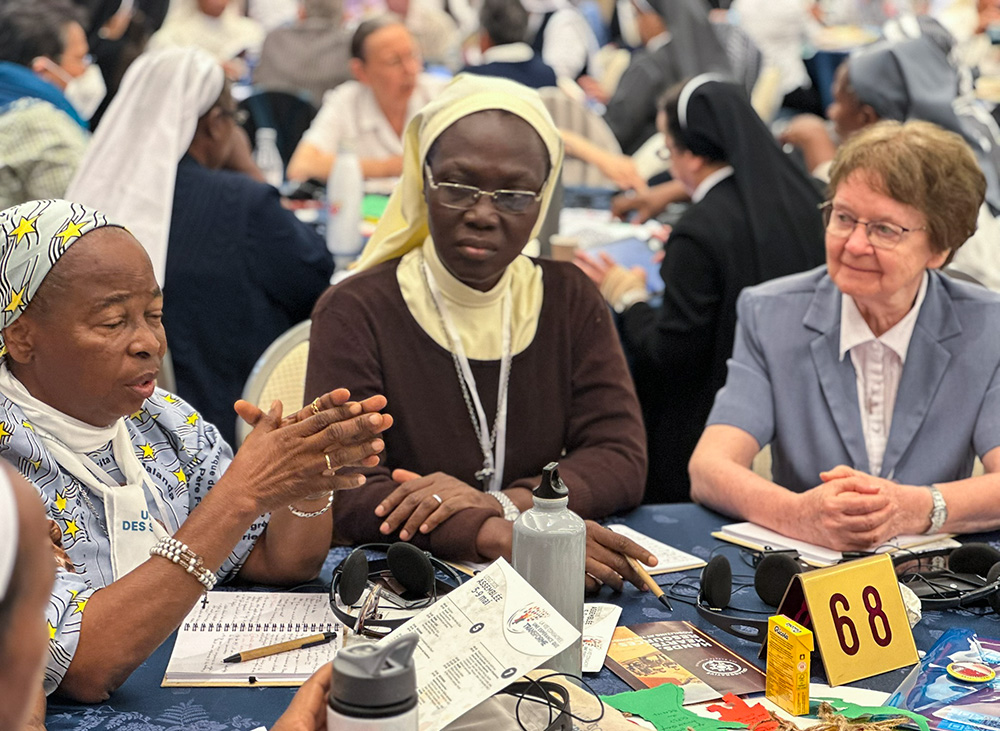
The International Union of Superiors General's newly released report charts a path for religious life through 2031. At this year's plenary, sisters engaged in synodal conversations as an homage and continuation of both Vatican II and Francis' papacy. (GSR photo/Soli Salgado)
That dream has since materialized in concrete ways: UISG now leads or partners in major global projects, including Talitha Kum (the international sister-led anti-trafficking network), Catholic Care for Children International, Sowing Hope for the Planet, and initiatives focused on safeguarding, interculturality and theological formation.
These programs are also lifelines for congregations navigating diminishing resources, growing pastoral demands and increasingly urgent social issues. As one respondent is quoted in the report, UISG serves as the "lungs taking in oxygen and then nourishing all the other organs."
Global challenges, regional nuances
Amid rising authoritarianism, climate devastation and the erosion of ecclesial credibility, sisters across continents are grappling with how to live religious life faithfully — and prophetically — in a "change of eras."
That phrase, reflecting words from a 2015 speech of Pope Francis, echoes throughout the report, and resonates especially with younger congregational leaders, who are inheriting a religious life that is leaner, more intercultural and often more vulnerable.
Survey results (gathered from nearly 550 superiors general) highlighted how needs vary significantly across regions.
Advertisement
Sisters in Africa noted that while they are growing in numbers, the same can't be said for their resources or preparation. In Asia, where many congregations serve in interfaith contexts, respondents prioritized interreligious dialogue, theological formation, and social cohesion.
In Latin America and the Middle East, community-based responses to political instability, violence and migration emerged as pressing concerns. Meanwhile, European and North American superiors highlighted aging communities, interculturality, leadership sustainability and mental health.
Despite these regional nuances, the report found consensus around several core needs: leadership formation, spiritual accompaniment, intercongregational solidarity, and visibility within the wider church.
UISG has responded by building multilingual programming, accessible digital platforms and region-specific gatherings. Constellation structures — regional groupings of members — allow for grassroots concerns to shape global priorities.

Representing about 590,000 sisters from around the world, the International Union of Superiors General held its triennial general assembly May 5-9, 2025, uniting 950 superiors general and guests from around the world in celebration of the organization's 60th year. (GSR photo/Soli Salgado)
From reawakening to renewal
Perhaps one of the most striking findings in the report is how stakeholders outside religious life perceive UISG.
According to the report, embassies to the Holy See increasingly turn to UISG for insights into women's realities at the grassroots. "They get things done," one ambassador said of UISG, quoted in the report.
UISG, they said, has become a trusted convener and prophetic voice, capable of bridging grassroots realities with global structures.
Diplomats described UISG as a "humanizing force" and praised its influence on issues like human trafficking and peacebuilding. Donors viewed it as a "hub" where their support could reach dozens of congregations at once. Vatican officials expressed appreciation for UISG's thoughtful, noncombative advocacy, particularly around the synod on synodality.
According to the report, embassies to the Holy See increasingly turn to UISG for insights into women's realities at the grassroots. 'They get things done,' one ambassador said of UISG.
This visibility has translated into influence. UISG is now a consistent presence in Vatican consultations, the synod process, and international policy discussions on trafficking, migration and climate change. Its executive secretary, Loreto Sr. Patricia Murray, has served on synodal drafting teams, and its president, Sr. Mary Barron, a Missionary Sister of Our Lady of the Apostles, was recently appointed to the Dicastery for Evangelization.
Still, the report emphasizes that visibility is not an end in itself: It is a platform for communal discernment and prophetic witness.
Synodality as a compass
Key emerging priorities outlined in the report include:
- Deepening support for superiors general through tailored formation;
- Expanding projects that respond to global suffering, particularly care for migrants, the environment and abused sisters;
- Strengthening UISG's internal capacity to serve its members, especially in digital engagement, finance, and translation;
- Embracing synodality as both structure and spirituality;
- Advocating for the role of women and women religious within a changing church.
UISG is being asked not just to model synodality in its governance, but to help sisters and their communities live it — through dialogue, listening and co-responsibility. The report emphasizes spiritual discernment as the "way into the future," calling on UISG to root all planning in contemplative practice.
One recommendation includes the continued integration of "conversations in the Spirit" into UISG assemblies and webinars. Another invites UISG to create more spaces for younger sisters to reflect theologically on religious life, build leadership skills and contribute to a collective reimagining of charism.
"Guided by the wisdom of the Spirit, UISG steps into this new chapter with confidence and hope, ready to fulfil its mission with renewed vigour and unity," Barron and Murray wrote in the report's foreword.
"Together, we weave the threads of solidarity, sow seeds of care for our earth community, and nurture a hope that transforms."

